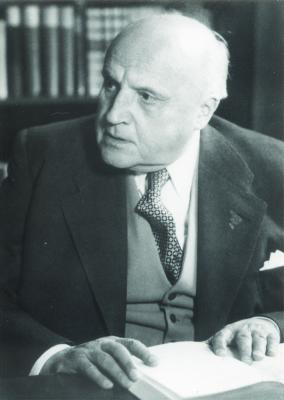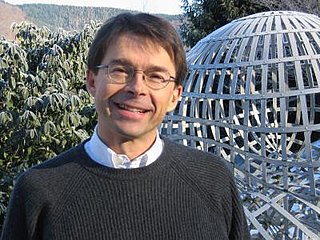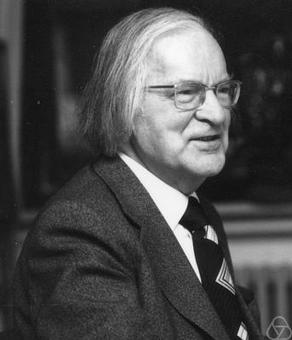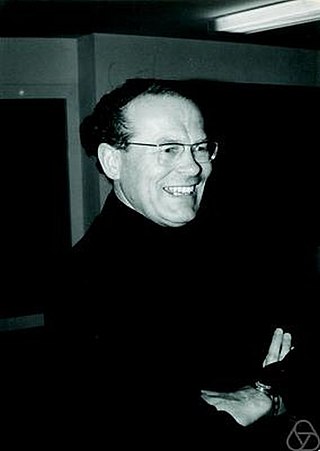
Gerhard Karl Erich Gentzen was a German mathematician and logician. He made major contributions to the foundations of mathematics, proof theory, especially on natural deduction and sequent calculus. He died of starvation in a Czech prison camp in Prague in 1945, having been interned as a German national after the Second World War.

Harold Scott MacDonald "Donald" Coxeter was a British-Canadian geometer and mathematician.

Erhard Schmidt was a Baltic German mathematician whose work significantly influenced the direction of mathematics in the twentieth century. Schmidt was born in Tartu, in the Governorate of Livonia.

Heinrich Franz Friedrich Tietze was an Austrian mathematician, famous for the Tietze extension theorem on functions from topological spaces to the real numbers. He also developed the Tietze transformations for group presentations, and was the first to pose the group isomorphism problem. Tietze's graph is also named after him; it describes the boundaries of a subdivision of the Möbius strip into six mutually-adjacent regions, found by Tietze as part of an extension of the four color theorem to non-orientable surfaces.
Mathematische Annalen is a German mathematical research journal founded in 1868 by Alfred Clebsch and Carl Neumann. Subsequent managing editors were Felix Klein, David Hilbert, Otto Blumenthal, Erich Hecke, Heinrich Behnke, Hans Grauert, Heinz Bauer, Herbert Amann, Jean-Pierre Bourguignon, Wolfgang Lück, Nigel Hitchin, and Thomas Schick. Currently, the managing editor of Mathematische Annalen is Yoshikazu Giga.
In arithmetic geometry, the Weil–Châtelet group or WC-group of an algebraic group such as an abelian variety A defined over a field K is the abelian group of principal homogeneous spaces for A, defined over K. John Tate named it for François Châtelet who introduced it for elliptic curves, and André Weil, who introduced it for more general groups. It plays a basic role in the arithmetic of abelian varieties, in particular for elliptic curves, because of its connection with infinite descent.

Eberhard Frederich Ferdinand Hopf was a German mathematician and astronomer, one of the founding fathers of ergodic theory and a pioneer of bifurcation theory who also made significant contributions to the subjects of partial differential equations and integral equations, fluid dynamics, and differential geometry. The Hopf maximum principle is an early result of his (1927) that is one of the most important techniques in the theory of elliptic partial differential equations.
Wladimir P. Seidel was a Russian-born German-American mathematician, and Doctor of Mathematics. He held a fellowship as a Benjamin Peirce Professor in Harvard University. During World War II, he was with the Montreal Theory group for the National Research Council of Canada.
In mathematics, a group is called an Iwasawa group, M-group or modular group if its lattice of subgroups is modular. Alternatively, a group G is called an Iwasawa group when every subgroup of G is permutable in G.
Mathematische Nachrichten is a mathematical journal published in 12 issues per year by Wiley-VCH GmbH. It should not be confused with the Internationale Mathematische Nachrichten, an unrelated publication of the Austrian Mathematical Society.
Henry Christian Wente was an American mathematician, known for his 1986 discovery of the Wente torus, an immersed constant-mean-curvature surface whose existence disproved a conjecture of Heinz Hopf.

Michael Struwe is a German mathematician who specializes in calculus of variations and nonlinear partial differential equations. He won the 2012 Cantor medal from the Deutsche Mathematiker-Vereinigung for "outstanding achievements in the field of geometric analysis, calculus of variations and nonlinear partial differential equations".
Reinhardt Kiehl is a German mathematician.

Hans Rohrbach was a German mathematician. He worked both as an algebraist and a number theorist and later worked as cryptanalyst at Pers Z S, the German Foreign Office cipher bureau, during World War II. He was latterly known as the person who broke the American diplomatic O-2 cypher, a variant of the M-138-A strip cipher during 1943. Rohrbach wrote a report on the breaking of the strip cypher when he was captured by TICOM, the allied effort to roundup and seize captured German intelligence people and material.

Bruno Baron von Freytag-Löringhoff was a German philosopher, mathematician and epistemologist. He was also a university lecturer at the University of Tübingen. During World War II, Freytag-Löringhoff worked as a mathematician in the In 7/VI, that was the signals intelligence agency of the Wehrmacht and worked with Fritz Menzer on the testing of cryptographic devices and procedures. Freytag-Löringhoff worked specifically on the testing of the m-40 cipher machine. His most important contributions to the history of logic and mathematics was his studies and descriptions from 1957, of the calculating machine, built by Wilhelm Schickard.
Harry Schmidt was a German mathematician. Core areas of his research were experimental physics, as well as the theory of boundary layers and wings in aerodynamics.
Ascher Otto Wagner was an Austrian and British mathematician, specializing in the theory of finite groups and finite projective planes. He is known for the Dembowski–Wagner theorem.

Wolfgang Gaschütz was a German mathematician, known for his research in group theory, especially the theory of finite groups.








